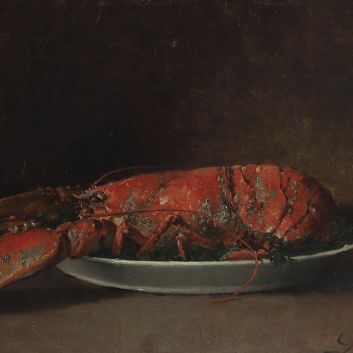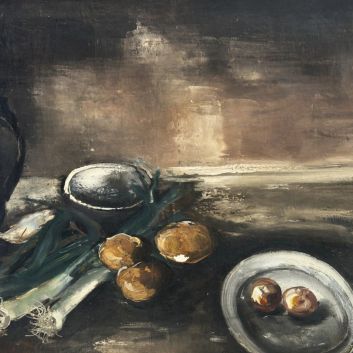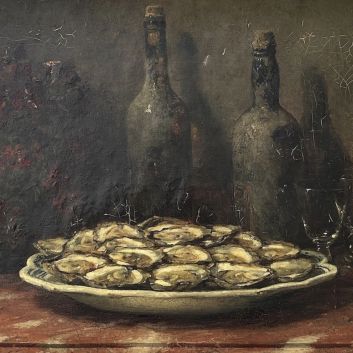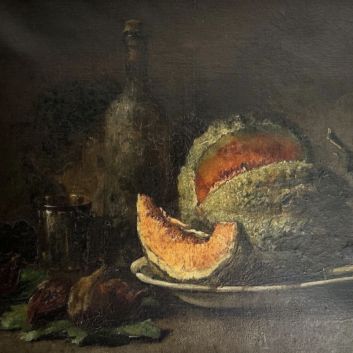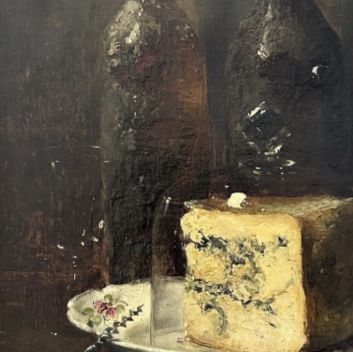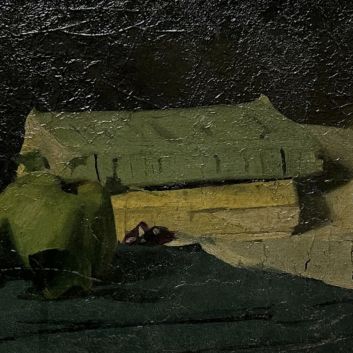Cote et valeur des tableaux - natures mortes de Maurice de Vlaminck
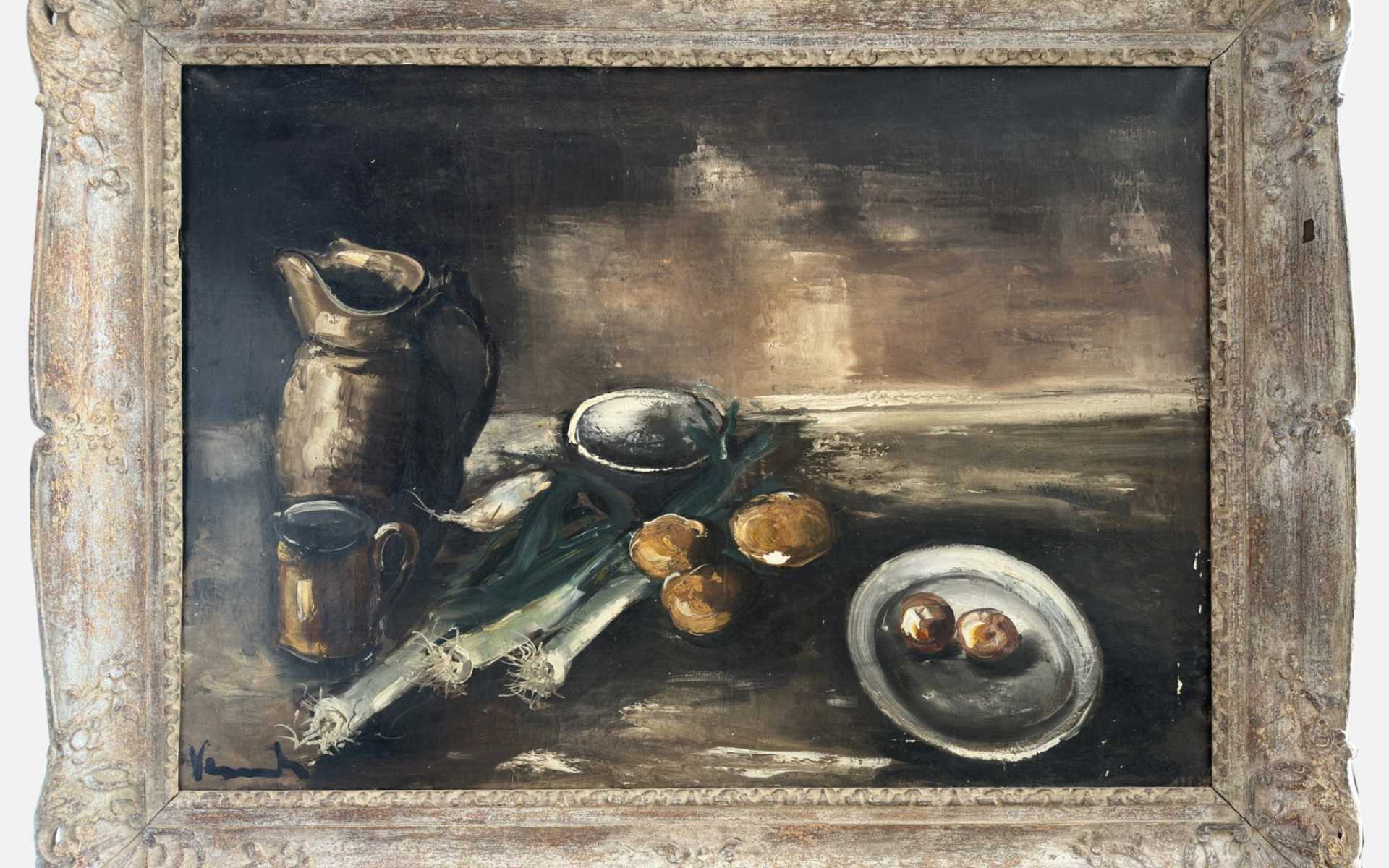
If you own a work by or about Maurice de Vlaminck and would like to know its value, our state-approved experts and auctioneers will be happy to offer you their expert appraisal services.
Indeed, Maurice de Vlaminck is a well-known artist to Auctie's and its experts.
Recently, several paintings by the Fauvist painter were put up for sale and were a great success - with the hammer price exceeding our high estimate.
This is why we particularly encourage you to submit your Vlaminck painting for appraisal, and if you so wish, for sale.
Our specialists will carry out a free appraisal of your work, and provide you with a precise estimate of its current market value.
Then, if you want to sell your painting, we'll point you in the right direction to get the best possible price for it.
Rating and value of the artist Maurice de Vlaminck
Considered one of the pioneers of Fauvism, Maurice de Vlaminck quickly made his mark on twentieth-century art history.
This legacy is made up of a variety of creations: mainly oils on canvas, including still lifes.
At present, the prices of his works are rising enormously under the auctioneers' hammer. His still lifes are particularly prized, and the price at which they sell on the art market ranges from €5 to €13,488,000 - a considerable difference, but one that speaks volumes about the value that can be attributed to Vlaminck's paintings.
In 2021, a still life of fruit with a blue cast, dating from 1907, sold for €1,988,800, whereas it was estimated at between €1,403,860 and €2,105,790.
Order of value from a simple work to the most prestigious
Type of still life | Results |
|---|---|
Still life with fish | From €9,160 to €193,000 |
Still life with flowers | From €1,190 to €869,000 |
Still life with fruit | From €6,880 to €1,989,000 |
Response in less than 24h
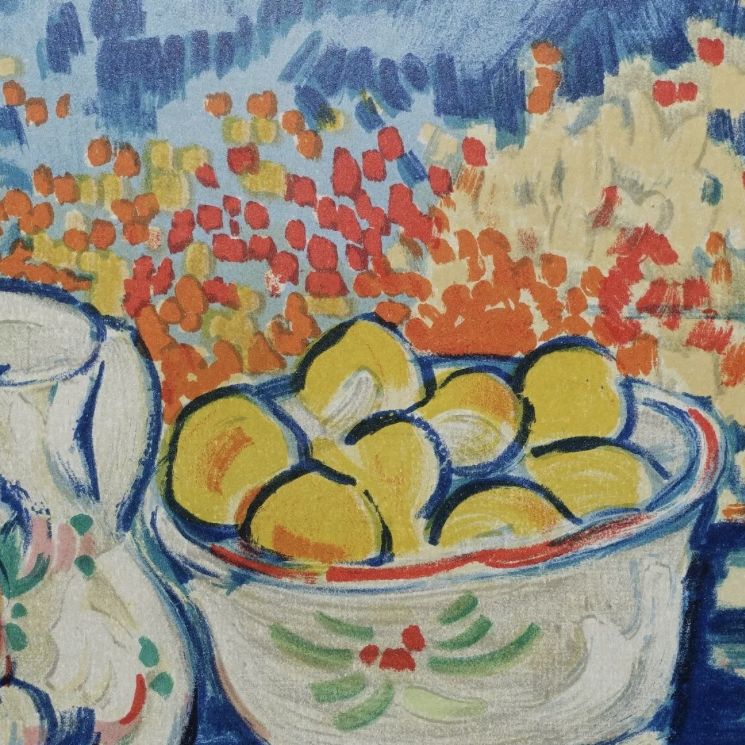
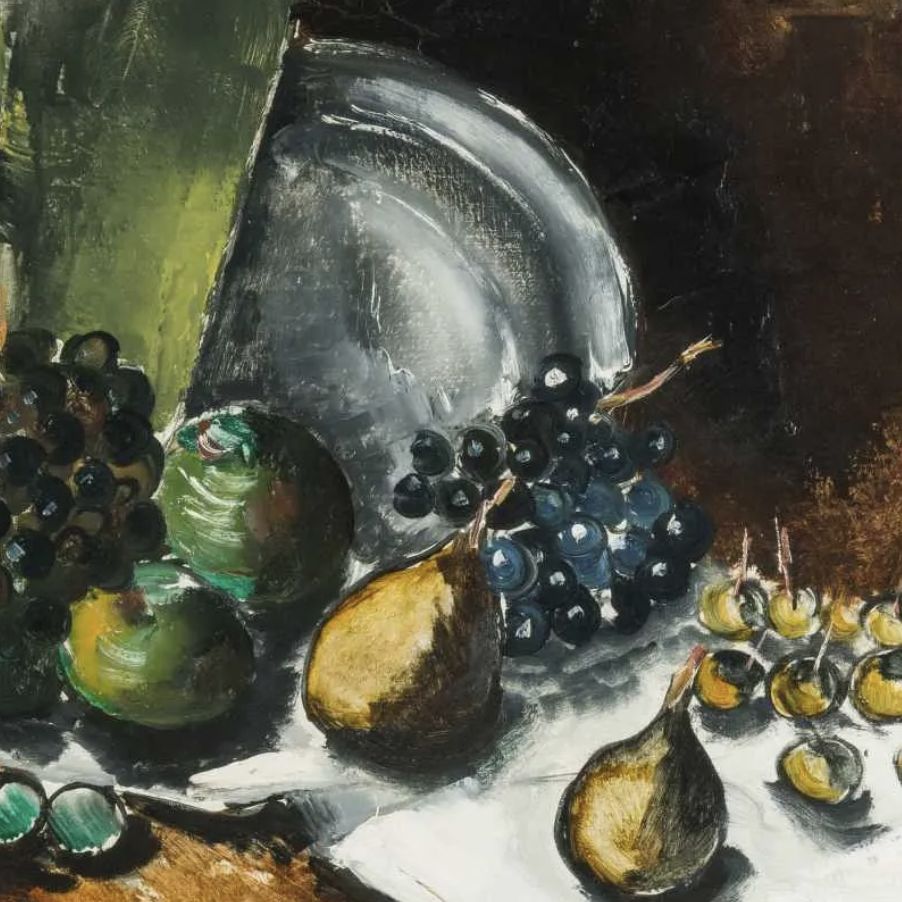
Maurice de Vlaminck's chromatic work in still lifes
Maurice de Vlaminck, a central figure of Fauvism, left his mark on the history of painting in the early 20th century with a daring approach that favored instinct and emotion over analysis and precision.
He established himself as one of the first to fully embrace the chromatic rupture that characterizes Fauvism, a movement made famous in 1905 by Louis Vauxcelles' scathing criticism of Salle VII at the Salon d'Automne.
Vlaminck, along with artists such as Matisse and Derain, explored the use of pure color, applied in broad strokes, with no concern for realism.
This rejection of traditional representation is also evident in his still lifes, a genre in which he distinguished himself on several occasions throughout his career.
Although his compositions may seem conventional at first glance, the elements that make them up are carefully chosen to provide an ideal playground for his chromatic experiments.
Flowers, often at the center of his still lifes, are not simply decorative objects. They become pretexts for an explosion of color, allowing Vlaminck to deploy his entire palette in vibrant, almost violent tones.
The saturation of reds, yellows and blues, far from respecting the natural color of flowers, underlines the artist's desire to free color from its descriptive function, transforming it into a means of emotional expression.
Similarly, fruit often appears in his still lifes. They allow Vlaminck to play with simple, round shapes, and explore variations in light and texture through color.
The bright oranges, deep greens of apples and saturated purples of grapes are treated with an intensity that goes far beyond naturalism. For Vlaminck, color is not limited to imitating reality; it becomes an autonomous, living element, carrying its own energy.
Another recurring subject in his still lifes is fish. This choice seems to resonate with his marine works, in which the artist often expresses his fascination for coastal landscapes.
Vlaminck spent much of his career traveling along the French coast, particularly in Normandy, and his encounters with the sea were an important part of his work.
The fish in his still lifes can thus be seen as an extension of this interest in maritime scenes.
They are not treated with cold, scientific exactitude, but as sensual, organic forms, imbued with the atmosphere of the seashores he so frequently painted. Their shiny scales become playgrounds for light and color, recalling the way he captured the changing reflections of the sea.
Vlaminck's still lifes put Fauvist principles to the test. Flowers, fruit and fish are merely pretexts for a passionate search for color and material.
With a bold technique and a masterful sense of composition, he transforms these ordinary objects into vehicles of intense, raw emotion, where instinct takes precedence over academic precision, and color becomes the soul of the work.

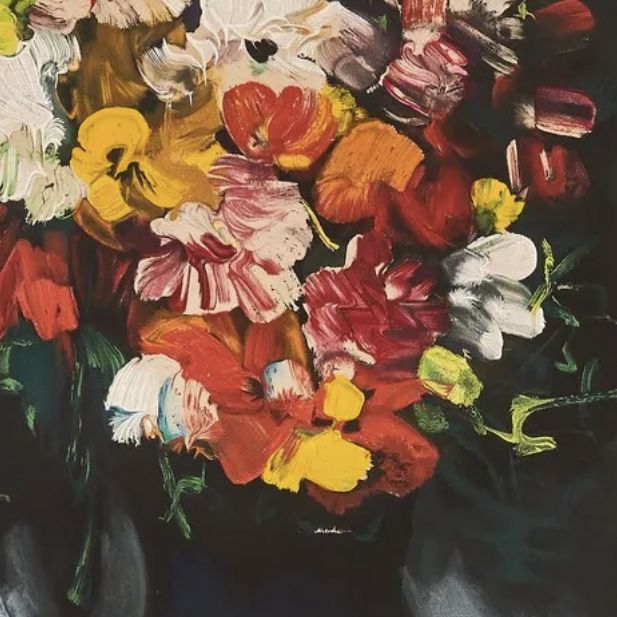
Maurice de Vlaminck and the colorimetric instinct
Maurice de Vlaminck, whose real name was Maurice Edmond Devlaeminck (1876-1958), was one of the emblematic figures of Fauvism, the revolutionary movement that overturned the conventions of art in the early 20th century.
Born in Paris into a modest family, he remained loyal to the city throughout his life, but his work extended far beyond its borders. Although best known for his vibrant, color-saturated landscapes, Vlaminck dabbled in other artistic genres, such as nudes and, to a lesser extent, ceramics.
Nevertheless, it was through his painting that the artist succeeded in establishing his name among the greatest of his time.
Trained from an early age by a painter living near his family home, Vlaminck acquired technical mastery early on, but it was his instinctive approach and passion for exploring color that would become his true artistic signatures.
For him, color is the primordial element, much more so than form or composition. He married Suzanne de Verly early in his career, a period when he was still juggling his multiple passions: music, cycling and painting.
Unrecognized at the time, Vlaminck struggled to make a living from his art, and it was only with the support of his family and a few influential friends, including his sister's husband, a well-known Parisian journalist, that he managed to make a name for himself.
The turning point in his career came when he met André Derain, with whom he forged a fruitful friendship. Together, they shared not only a new vision of painting, but also a desire to shake up established codes.
Their complicity is such that one constantly influences the other, particularly in the bold use of color, which they also share with Louis Valtat and Albert Marquetamong others.
Derain and Vlaminck moved away from academic naturalism to enter what art history would soon call the "orgy of pure tones", a chromatic explosion that would profoundly influence the 1905 Salon d'Automne, renamed by Louis Vauxcelles "la cage aux fauves".
Alongside Henri Matisse, they spearheaded this new generation that placed color at the heart of its work, no longer to faithfully represent the world, but to express the most intense emotions.
Vlaminck, with his fiery temperament, embraced this new approach with passion. He painted with an almost savage vigor, applying color brutally, without regard for convention.
This stylistic freedom made him a precursor of modern art. He soon attracted the attention of major art dealers such as Ambroise Vollard and Daniel-Henry Kahnweiler, who brought him international recognition and visibility.
Vlaminck took part in numerous exhibitions throughout Europe and the United States, consolidating his reputation beyond France's borders.
However, his career came to a halt with the outbreak of the First World War. Although he was not sent to the front because of his family situation - he was the father of three daughters - he was assigned to a factory, which slowed down his artistic activity.
After the war, Vlaminck took up his brush again and continued his exploration of landscapes, which he now treated with darker tones, marked by the experience of the conflict.
The Second World War once again interrupted his career. But this time, the artist became actively involved in the Resistance.
Staunchly opposed to the ideals of collaborationist writer Louis-Ferdinand Céline, Vlaminck did not hesitate to take a stand against the Nazi occupation.
This latest commitment adds a political dimension to his work and his life, revealing an artist not only committed to creative freedom, but also to moral freedom.
In this way, Maurice de Vlaminck, through a career marked by hardship and success, was able to impose a new vision of art in which color becomes a primordial force, deployed with ardor and sincerity.
Introduction to colorimetry - 1
The legacy of Maurice de Vlaminck
Vlaminck is an artist who evolved with the times, and his artistic output reflects this. He helped revolutionize contemporary art with the early Fauvists.
His work is varied and follows the evolution of the century, with expressionist touches in his late-career works. Like Kandinsky, he worked on color and published essays on art that had a considerable influence on many painters.
The most popular works for these artists today are those produced in the early 20th century, characterized by pure, vivid tones and slightly enlarged strokes.
Recognizing the artist's signature
Vlaminck's works are often signed, and his signature can vary from year to year. It can also be found on manuscripts. However, he was and is much copied, which is why it's important to have your work appraised.
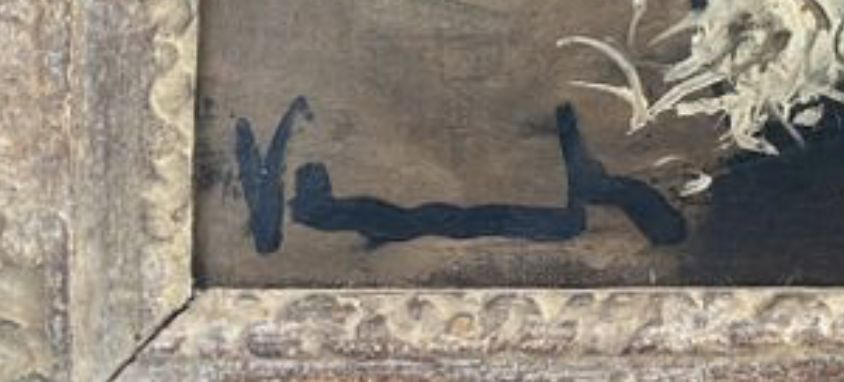
Knowing the value of a work
If you happen to own a painting by or after Maurice de Vlaminck, don't hesitate to ask for a free estimate using the form on our website.
A member of our team of experts and certified auctioneers will contact you promptly to provide you with an estimate of the market value of your work, as well as any relevant information about it.
If you're thinking of selling your work of art, our specialists will also be on hand to help you find alternatives for selling it at the best possible price, taking market trends into account.
Response in less than 24h
Related topics
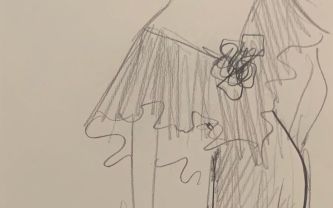
Rating and value of Yves Saint Laurent's fashion drawings
Yves Saint Laurent is a great twentieth-century couturier who produced many valuable fashion designs throughout his career.
Read more >

Cote et valeur 2024 des tableaux, dessins, peintures de Mers...
Mersad Berber is a twentieth-century Bosnian artist who has produced works that are highly valued at auction. Estimated in 24h.
Read more >
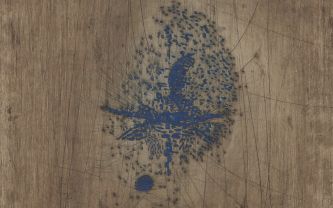
Cote et valeur des tableaux, dessins, gravures de Arthur-Lui...
Arthur-Luiz Piza est un artiste brésilien abstrait, qui a excellé dans le médium de la gravure mais a aussi produit d'autres oeuvres cotées.
Read more >
Secure site, anonymity preserved
State-approved auctioneer and expert
Free, certified estimates
